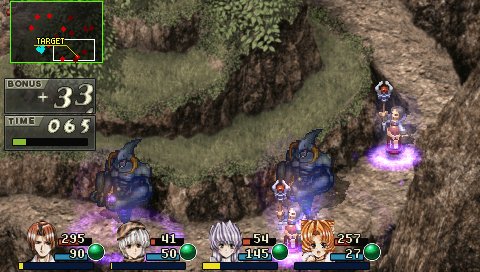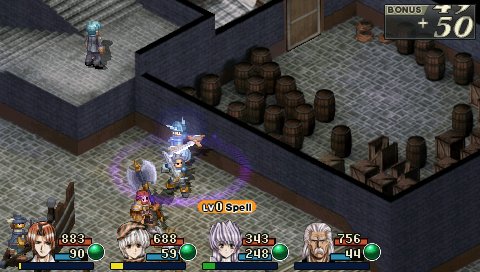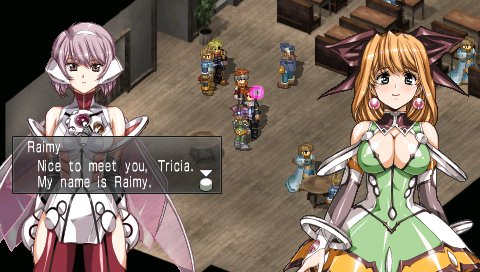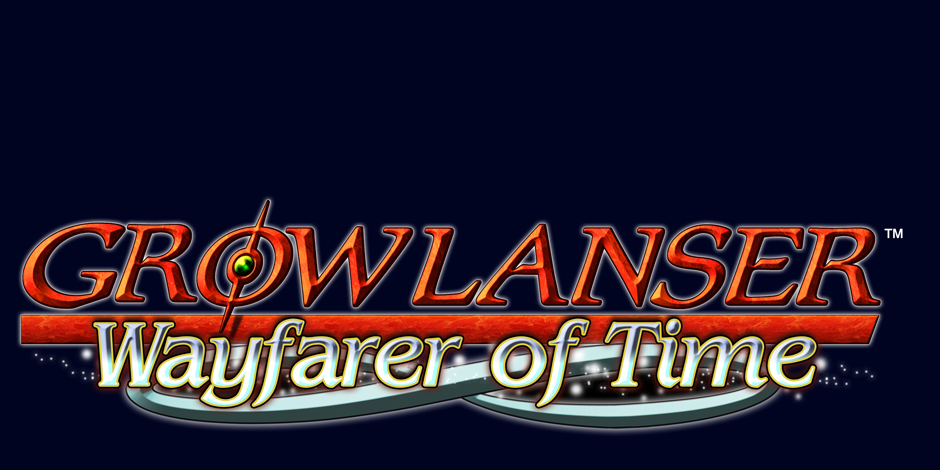GamesRadar+ Verdict
Pros
- +
Action-packed combat system
- +
Beautiful anime-style cut scenes
- +
Engaging plot
Cons
- -
Trial-and-error battles requiring multiple restarts
- -
Lack of cut scene subtitles
- -
Some distractingly low-res environments
Why you can trust GamesRadar+
Growlanser: Wayfarer of Time might be one of the last noteworthy games for the PSP. The tactical RPG came out in Japan nearly a decade ago for the PlayStation 2, but didn’t make its way to North America until the recent PSP release. The fast-paced battles, addictive exploration, and engaging story make Growlanser another strong entry in the PSP’s outstanding RPG library, but confusing objectives and late-game frustrations hold it back from greatness.
Though Wayfarer of Time is the fourth Growlanser game, those unfamiliar with the series can still jump right in without any previous knowledge. You’re quickly introduced to Crevanille, a young mercenary with a mysterious past who’s described as being very important to the future of mankind, though the reason why doesn’t become clear until much later in the game. Throughout Wayfarer, the major countries become engaged in an increasingly deadly war, while winged beings from the sky called Angels, intent on destroying the planet, cause mass destruction. These multiple sources of conflict create a rich, multi-layered story that never gets stale.

Wayfarer employs a tactical role-playing battle system, though there’s no grid often associated with games of the genre. Instead, fights typically move quickly, with the player having to balance physical attacks, spells, movement, and interaction with key items across party members. The use of spells play an important part in the game’s plot, but aren’t particularly helpful early in the game, which could lead players to ignore spellstones in favor of new armor when it comes to equipping characters. Unfortunately, defensive spells become extremely vital in the final quarter of the game, and those who haven’t been keeping up could suddenly find themselves struggling.
Adding another layer to the combat is the ring system, which is what ties the games in the Growlanser series together. Ring Weapons transform into swords, bows, or other pieces of equipment, depending on the character. They also allow spells to be attached and leveled up, and provide bonuses to health, attack power, or other attributes. Having the right combination of ring and spellstones is just as important as strength and HP, making Wayfarer of Time’s combat much more interesting than simply pressing X to attack.

Throughout the game, Crevanille and his friends explore ruins, which contain secrets of a culture destroyed 2,000 years ago. Each ruin is completely different and guarded by a separate entity, adding a good amount of variety to the dungeon-crawling portions of the game. Sometimes key battles both in and out of ruins have confusing objectives that don’t become clear until a few turns in, resulting in a trial-and-error approach that wastes time and forces fights to be restarted. Despite the issues, employing the right strategy in combat is very satisfying.
There’s no shortage of RPG clichés in Wayfarer, but the plot and characters are consistently interesting, and there are some genuinely emotional moments throughout the story. Major story events can change based on Crevanille’s relationships with other characters, which can be altered through conversation choices. Additionally, the party will occasionally go on furlough, and the player chooses how to spend Crevanille’s days off. This mechanic presents additional opportunities to build friendships, or even pursue relationships. It’s a nice addition to the gameplay, but doesn’t go very deep, so it lacks the addictiveness of the relationship building in games like Persona 3.

Wayfarer of Time sports some gorgeous animated cutscenes to convey the game’s major story moments, but unfortunately, these segments don’t have subtitles. It’s a small complaint, but also something that should be standard in games by now. The visuals for the rest of the game are hit or miss. Detailed sprites are used to represent the characters throughout the game, giving it a nostalgic feel, and some backgrounds are vivid and clear. Others, however, are distractingly blurry, and not at all up to the PSP’s graphical standards. It’s accompanied by a soundtrack that suits the gameplay well, but is easily forgettable once the PSP is turned off.
Even with its limitations, Wayfarer of Time is consistently engaging throughout its lengthy gameplay. The plot is over 40 hours long—even longer if you count all the time you’ll spend restarting certain battles—and even when faced with frustratingly cheap objectives, we just wanted to keep playing, pressing forward, getting through just one more battle to make it to the next town. Your choices can make a difference between life and death for some characters, and with multiple endings, the conclusion of the game will reflect the decisions you made throughout. If Growlanser: Wayfarer of Time is the PSP’s swan song, then the handheld will go out on a good note.
More info
| Genre | Role Playing |
| Description | The fourth chapter of the Growlanser series comes to PSP! |
| Platform | "PSP" |
| US censor rating | "Teen" |
| UK censor rating | "" |
| Release date | 1 January 1970 (US), 1 January 1970 (UK) |
Sarah is a freelance writer, editor, and consultant. Her work has appeared on websites including IGN, Polygon, Variety, NBC News, Nerdist, Ars Technica, GamesRadar, and more.




